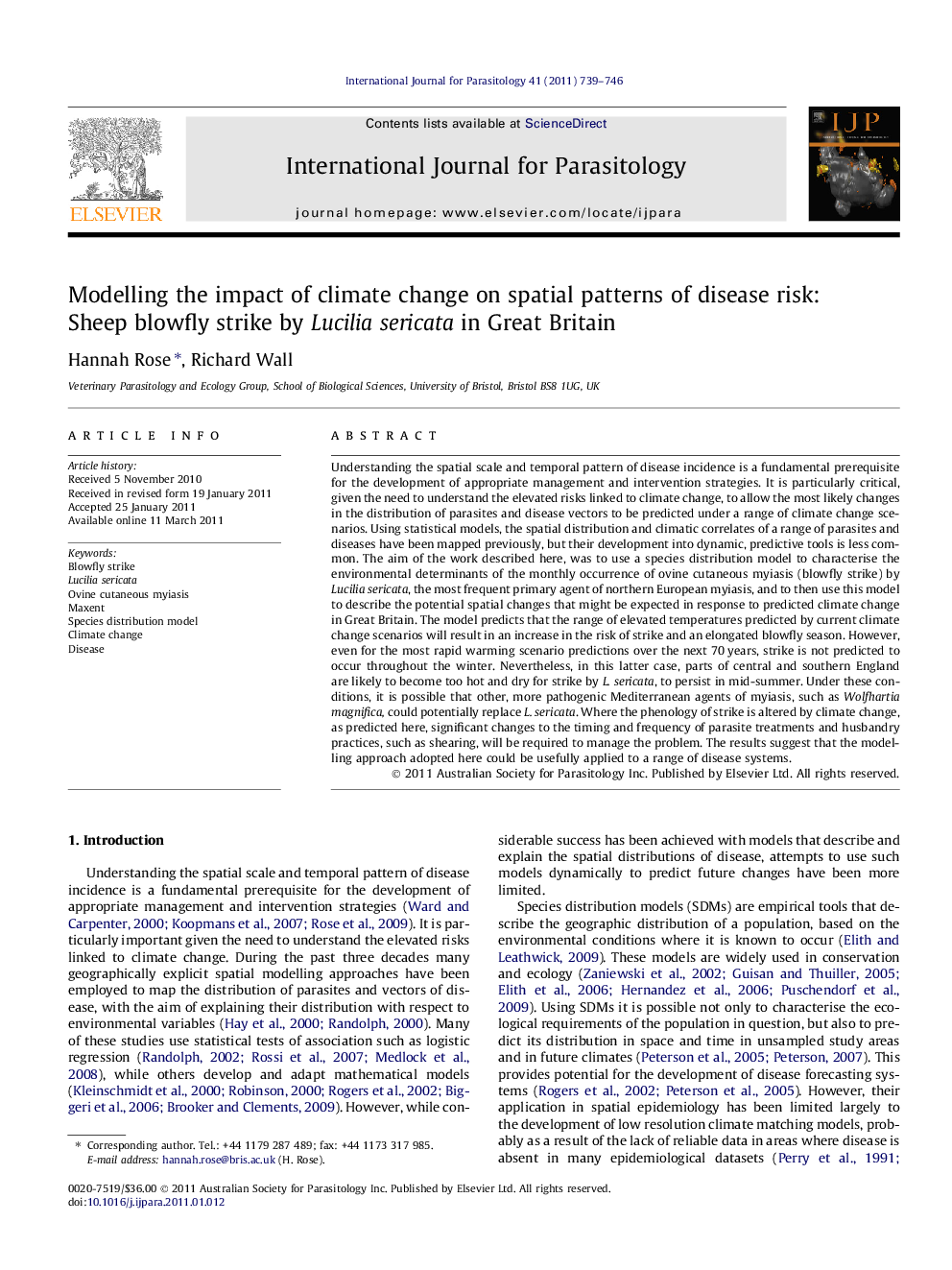| کد مقاله | کد نشریه | سال انتشار | مقاله انگلیسی | نسخه تمام متن |
|---|---|---|---|---|
| 2436238 | 1107294 | 2011 | 8 صفحه PDF | دانلود رایگان |

Understanding the spatial scale and temporal pattern of disease incidence is a fundamental prerequisite for the development of appropriate management and intervention strategies. It is particularly critical, given the need to understand the elevated risks linked to climate change, to allow the most likely changes in the distribution of parasites and disease vectors to be predicted under a range of climate change scenarios. Using statistical models, the spatial distribution and climatic correlates of a range of parasites and diseases have been mapped previously, but their development into dynamic, predictive tools is less common. The aim of the work described here, was to use a species distribution model to characterise the environmental determinants of the monthly occurrence of ovine cutaneous myiasis (blowfly strike) by Lucilia sericata, the most frequent primary agent of northern European myiasis, and to then use this model to describe the potential spatial changes that might be expected in response to predicted climate change in Great Britain. The model predicts that the range of elevated temperatures predicted by current climate change scenarios will result in an increase in the risk of strike and an elongated blowfly season. However, even for the most rapid warming scenario predictions over the next 70 years, strike is not predicted to occur throughout the winter. Nevertheless, in this latter case, parts of central and southern England are likely to become too hot and dry for strike by L. sericata, to persist in mid-summer. Under these conditions, it is possible that other, more pathogenic Mediterranean agents of myiasis, such as Wolfhartia magnifica, could potentially replace L. sericata. Where the phenology of strike is altered by climate change, as predicted here, significant changes to the timing and frequency of parasite treatments and husbandry practices, such as shearing, will be required to manage the problem. The results suggest that the modelling approach adopted here could be usefully applied to a range of disease systems.
Figure optionsDownload high-quality image (42 K)Download as PowerPoint slideHighlights
► The distribution of disease can be predicted using species distribution models.
► The annual period of blowfly strike risk may extend 2 months with climate change.
► Blowfly strike is not expected to persist through the winter.
► In some areas conditions may become unsuitable for strike by Lucilia sericata.
► Conditions may become more suitable for strike by Wolfhartia magnifica.
Journal: International Journal for Parasitology - Volume 41, Issue 7, June 2011, Pages 739–746